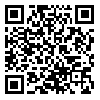BibTeX | RIS | EndNote | Medlars | ProCite | Reference Manager | RefWorks
Send citation to:
URL: http://rme.gums.ac.ir/article-1-1405-en.html
Introduction: One of the first skills that medical students learn is to measure and record blood pressure correctly. However, the results of studies have shown that students usually lack enough knowledge about the correct methods of measuring blood pressure, and this may affect their performance. This study was conducted to determine the effectiveness of the educational video with peer feedback on the knowledge of medical students about how to measure blood pressure.
Methods: In this quasi-experimental study, 115 medical students were selected from the clinical internship section in Hamadan Faculty of Medicine (2023) by available sampling methods. The research team made an educational video on how to measure blood pressure based on the latest clinical guidelines for assessing blood pressure. Students' knowledge was assessed pre- and post-test using a 21-item researcher-made questionnaire. After collection, the data were analyzed using descriptive statistics, including central and dispersion indices and Wilcoxon, Mann-Whitney, and McNemar statistical tests, through SPSS version 26.
Results: Of the students, 60% were male and 40% were female. In terms of age, 7.6% were under 22 years old, 78.4% were between 22 to 24 years old, and 14% were over 24 years old. The mean and standard deviation of the student’s knowledge score of the total of 21 questions before watching the movie was 8.72±2.82, which after watching the movie increased to 18.8±2.96 (Z=-9.32, P<0.001). The frequency of awareness before watching the educational film was 41%, and after watching the film was 86% (P<0.05).
Conclusion: The knowledge of medical students increased after watching the educational video. Therefore, it seems that educational videos and peer feedback are effective methods of teaching the correct method of blood pressure measurement. Periodic repetition of teaching blood pressure measurement based on the last clinical guidelines using new educational methods, including multimedia methods, helps to improve the quality of education
| Rights and permissions | |
 |
This work is licensed under a Creative Commons Attribution-NonCommercial 4.0 International License. |




